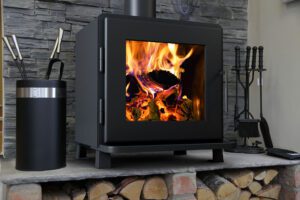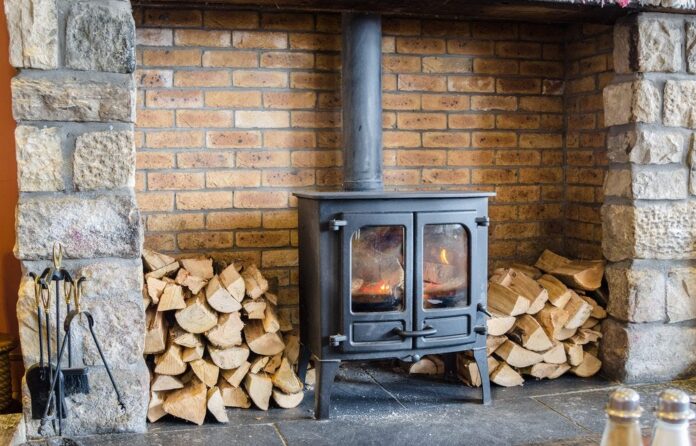- Introduction
Indoor wood-burning stoves have been a timeless and versatile heating solution for centuries. As technology evolves and environmental concerns grow, these stoves continue to adapt, providing efficient and sustainable warmth to homes. In this exploration, we delve into the various aspects of indoor wood-burning stoves, from their historical roots to modern designs, addressing their benefits, challenges, and the overall impact on both comfort and the environment.
2. Historical Evolution
Wood-burning stoves have a rich history, dating back to ancient times. The earliest stoves were simple, consisting of an enclosed firebox and chimney. Over time, innovations like the cast iron stove in the 18th century revolutionized indoor heating. These stoves became central to homes, offering not only warmth but also a place for cooking and socializing. Fast forward to the 21st century, and wood-burning stoves have evolved significantly, combining traditional aesthetics with modern functionality.
3. Modern Designs and Features
Contemporary indoor wood-burning stoves come in a myriad of designs and sizes, catering to diverse aesthetic preferences and spatial requirements. From sleek, minimalist models to classic, ornate ones, manufacturers offer a wide range of options. Moreover, modern stoves incorporate advanced features for improved efficiency and safety. Features such as secondary combustion, catalytic converters, and adjustable air intake contribute to cleaner burns and higher heat output.
4. Environmental Considerations
While the charm of a wood-burning stove is undeniable, environmental concerns regarding air quality and deforestation have led to increased scrutiny. However, advancements in stove technology have addressed some of these issues. High-efficiency stoves, equipped with clean-burning technologies, produce fewer emissions, mitigating their impact on air quality. Additionally, using sustainably sourced wood or alternative biomass fuels helps address deforestation concerns.
5. Efficiency and Cost Savings
Indoor wood-burning stoves are renowned for their efficiency in converting wood into heat. The combustion process in modern stoves is optimized to extract maximum energy, resulting in lower fuel consumption. This efficiency translates to cost savings for homeowners, especially when compared to conventional heating systems. With rising energy prices, wood-burning stoves offer a cost-effective alternative for those seeking to reduce heating expenses.
6. Installation and Maintenance
Installing a wood-burning stove requires careful consideration of safety and local regulations. Proper ventilation, chimney installation, and compliance with building codes are crucial elements in the installation process. Regular maintenance, including chimney sweeping and ash removal, ensures the stove’s optimal performance and longevity. Homeowners should be aware of these requirements to enjoy the benefits of a wood-burning stove without compromising safety.
7. Health and Safety Considerations
While wood-burning stoves provide warmth and ambiance, safety and health considerations must be prioritized. Adequate ventilation is essential to prevent the buildup of indoor air pollutants, such as carbon monoxide. Using dry, well-seasoned wood helps minimize emissions and reduces the risk of chimney fires. Installing carbon monoxide detectors provides an additional layer of safety, alerting occupants to potential dangers.
8. Integration with Home Heating Systems
Wood-burning stoves can be integrated into existing home heating systems to complement other sources of heat. Some stoves come equipped with connections for water heating, allowing homeowners to use the stove to supplement their hot water supply. This integration enhances the stove’s versatility and utility, making it a more integral part of the overall home heating strategy.
9. Aesthetic Appeal and Ambiance
Beyond their functional aspects, indoor wood-burning stoves contribute significantly to the ambiance of a living space. The mesmerizing dance of flames and the comforting crackle of burning wood create a cozy atmosphere, making the stove a focal point in any room. The aesthetic appeal of these stoves enhances the overall design and feel of a home, providing both visual and sensory satisfaction.
10. Community Regulations and Restrictions
Local regulations and restrictions regarding wood-burning stoves vary, and homeowners must be aware of these guidelines before installing a stove. Some areas may have bans on certain types of stoves or restrict burning during specific times to address air quality concerns. Understanding and adhering to these regulations is crucial to enjoying the benefits of a wood-burning stove without causing harm to the environment or violating local laws.
11. Future Trends and Innovations
As environmental awareness continues to grow, the future of indoor wood-burning stoves will likely see even more emphasis on sustainability and clean burning. Innovations in materials, design, and combustion technology may further enhance efficiency and reduce environmental impact. Additionally, smart home integration and improved user interfaces could make wood-burning stoves more user-friendly and energy-efficient.

12. Conclusion
Indoor wood-burning stoves have stood the test of time, providing warmth, aesthetics, and a connection to tradition. From their humble beginnings to the modern, efficient designs we see today, these stoves remain a viable heating option for many homeowners. While challenges exist, advancements in technology and a commitment to sustainability are reshaping the narrative, ensuring that wood-burning stoves continue to be a relevant and appealing choice for those seeking both practicality and ambiance in their homes.
For more information please visit insightfullhome.com.

